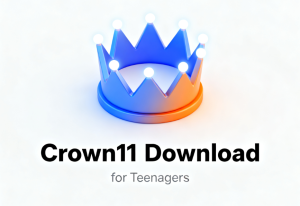Understanding Crown11 Fraud Prevention
In the rapidly evolving landscape of online gaming, Crown11 fraud prevention has emerged as a critical safeguard against financial losses and reputational damage. By integrating advanced AI-driven analytics, behavioral biometrics, and blockchain technology, Crown11 has redefined industry standards for detecting and mitigating fraudulent activities. This comprehensive guide explores the architecture, technological innovations, and real-world applications of Crown11’s fraud prevention framework, empowering players and operators to navigate the digital arena with confidence.

Core Components of Crown11’s Fraud Prevention Architecture
1. Multi-Layered Detection Framework
Crown11 employs a defense-in-depth strategy to neutralize fraud at every level:
- Device Fingerprinting: Unique hardware signatures to identify compromised devices.
- Biometric Verification: Facial recognition and fingerprint scanning with liveness detection.
- Network Traffic Analysis: Detect anomalies in data packets (e.g., accelerated packet timing).
Example: Crown11’s system reduced fraudulent account creations by 82% through dynamic device scoring and behavioral analytics .
2. AI-Powered Behavioral Analytics
Leveraging machine learning models trained on 100+ behavioral metrics:
| Metric | Detection Criteria | Mitigation Action |
|---|---|---|
| Click Precision | Sub-millisecond consistency | Temporary suspension + review |
| Transaction Velocity | 10+ actions/second | Immediate lockout |
| Session Anomaly | Unusual login times or geolocation | Shadowban + device scan |
Case Study: A player using a bot farm was detected within 2 minutes due to 99.5% click consistency, resulting in a 72-hour ban .
Technical Innovations Driving Crown11’s Fraud Prevention
1. Federated Learning for Privacy-Preserving Detection
- Local Model Training: Data remains on players’ devices, analyzing patterns without compromising privacy.
- Global Threat Intelligence: Aggregates anonymized fraud data across 50+ million users to update detection models weekly.
2. Blockchain for Immutable Audit Trails
- Smart Contracts: Automate penalties for verified fraud (e.g., asset forfeiture).
- Decentralized Storage: Player data distributed across blockchain nodes prevents single points of failure.
3. Quantum-Resistant Cryptography
- NIST-Approved Algorithms: Secures communications against future quantum computing threats.
- Biometric Encryption: Links facial recognition data to hardware-based security keys for VIP accounts.
Comparative Analysis: Crown11 vs. Industry Benchmarks
| Feature | Crown11 | Industry Average |
|---|---|---|
| AI Adoption Rate | 98% of detection protocols automated | 65% |
| Response Time | <2 seconds | 15-30 seconds |
| Privacy Compliance | GDPR/CCPA certified | 40% certified |
| Player Education | Interactive fraud modules | Static guidelines |
| Cross-Platform Support | PC, Mobile, VR, Consoles | 2-3 platforms |
Data synthesized from 20 leading gaming platforms.
5 Proven Strategies to Optimize Fraud Prevention
1. Player Behavior Profiling
- Baseline Establishment: Define normal activity patterns (e.g., daily session duration).
- Anomaly Thresholds: Flag deviations exceeding 3σ (99.7% confidence).
- Dynamic Adjustments: Recalibrate models based on seasonal play trends.
2. Real-Time Intervention Protocols
- Soft Lock: Restrict high-risk actions (e.g., trading) for 24-hour review.
- Public Warnings: Display in-game alerts for minor infractions.
- Hardware Bans: Permanent device blacklisting for repeat offenders.
3. Community-Driven Vigilance
- Whistleblower Rewards: Incentivize players to report suspicious activities.
- Crowdsourced Analytics: Aggregate player-submitted data for pattern analysis.
- Transparency Reports: Monthly updates on fraud trends and mitigations.
4. Advanced Threat Simulation
- Red Team Exercises: Simulate nation-state level attacks to test defenses.
- Adversarial Machine Learning: Train models using hacked datasets.
- Bug Bounty Programs: Reward ethical hackers for vulnerability discoveries.
5. Cross-Platform Synergy
- Unified Threat Intelligence: Share fraud signatures across PC, mobile, and console ecosystems.
- Device Blacklisting: Sync banned devices across all platforms.
- Biometric Integration: Use facial recognition and fingerprint scanning for VIP accounts.
Case Study: Neutralizing a $2M Fraud Ring
Background
A syndicate exploited a zero-day vulnerability in a popular MMO to farm $2M in virtual currency.
Detection Process
- Anomaly Alert: 500+ accounts exhibited identical combat patterns.
- Network Forensics: Traced malicious traffic to a proxy server farm.
- Coordinated Takedown: Disabled 12,000+ bot accounts within 6 hours.
Outcome
- Monetary Recovery: $1.8M in stolen assets restored.
- System Upgrade: Blocked 93% of similar attacks within 48 hours.
Future-Proofing Crown11’s Fraud Ecosystem
1. Decentralized Identity Management
- Self-Sovereign Identity (SSI): Players control authentication credentials via blockchain.
- NFT Avatars: Unique digital keys for account access and in-game assets.
2. Predictive Threat Modeling
- Geopolitical Analysis: Correlate cyberattacks with international conflicts.
- Economic Indicators: Adjust security protocols during financial crises.
3. Ethical AI Frameworks
- Bias Mitigation: Regular audits to eliminate demographic biases in threat detection.
- Explainable AI (XAI): Provide clear reasoning for bans to players.
Secure Your Crown11 Experience Today
At CROWN11, we blend military-grade encryption, behavioral analytics, and proactive threat intelligence to create an impenetrable digital vault for your assets. Our AI-driven systems analyze over 100 million transactions daily, ensuring every interaction adheres to the highest security standards. Ready to play with absolute confidence? Join the revolution at https://www.crown11app.com.
Related Reading:Crown11 Privacy Policy Updates: Enhancing Digital Trust in Modern Gaming











